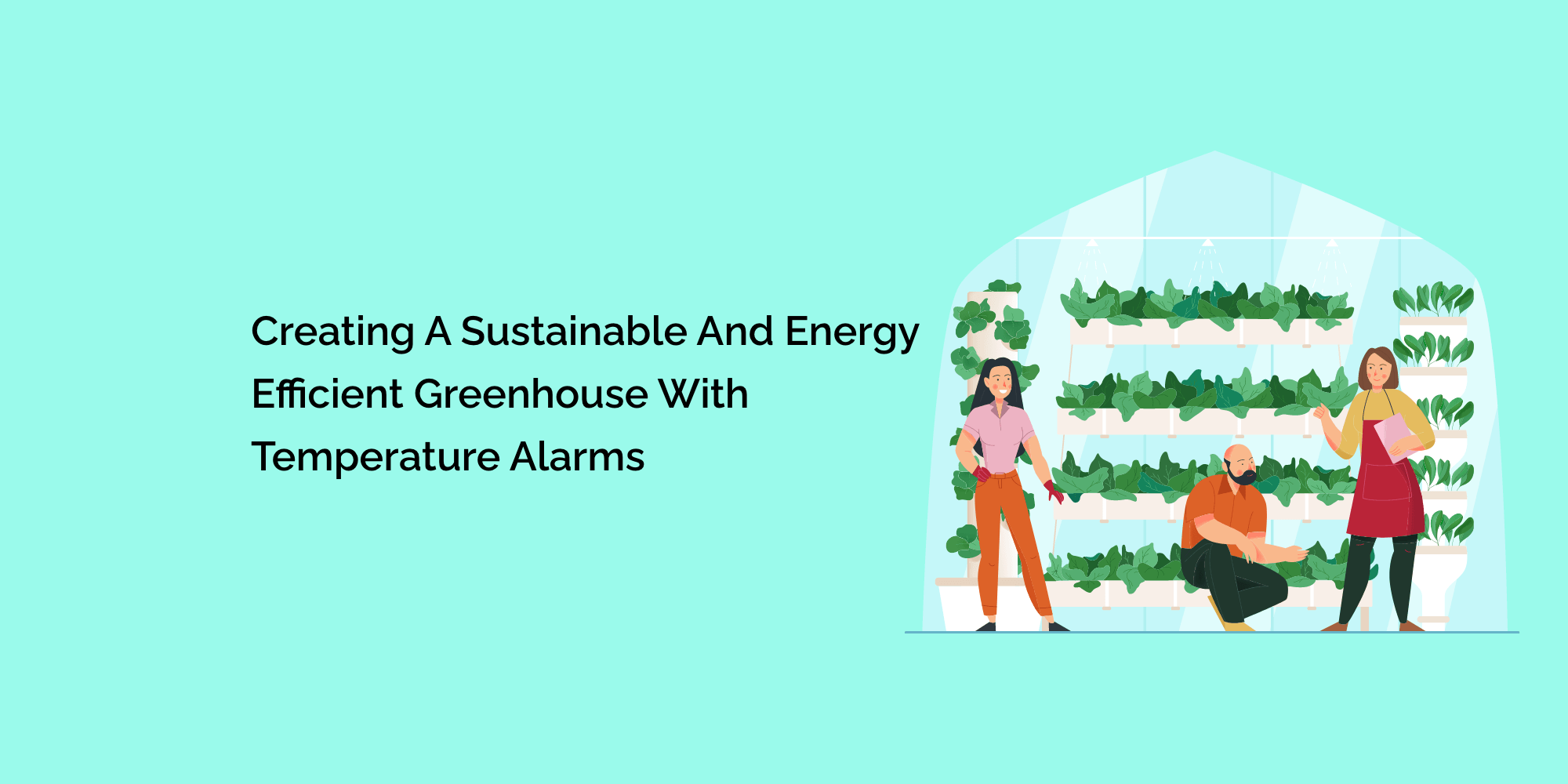Creating sustainable and energy-efficient greenhouses is crucial for growers in an era of increasing environmental consciousness. Temperature control plays a significant role in greenhouse operations, and implementing effective strategies can lead to substantial energy savings and reduced environmental impact. One essential tool for achieving sustainability and energy efficiency is temperature alarms. In this blog, we will explore how temperature alarms can contribute to creating sustainable and energy-efficient greenhouses. From optimizing heating and cooling systems to promoting resource conservation, we will discuss key considerations and best practices to help growers implement eco-friendly practices while maintaining optimal growing conditions.
Optimize Heating and Cooling Systems
Heating and cooling systems are major energy consumers in greenhouses. Growers can reduce energy consumption and create a more sustainable operation by optimizing their usage. Here's how temperature alarms can help:
-
Efficient Heating Strategies: Temperature alarms enable precise monitoring of temperature fluctuations. By setting appropriate temperature thresholds, growers can activate heating systems only when necessary, minimizing energy waste.
-
Passive Cooling Methods: Temperature alarms can help identify periods when natural ventilation or passive cooling methods are sufficient to maintain desired temperature ranges. This reduces reliance on energy-intensive cooling systems, resulting in significant energy savings.
- Integration with Automation: Integrating temperature alarms with automation systems allows for intelligent control of heating and cooling equipment. By utilizing data from the notices, systems can be programmed to operate based on specific temperature conditions, maximizing energy efficiency.
Implement Temperature-Responsive Shading
Temperature-responsive shading systems can significantly impact energy usage in greenhouses. Temperature alarms can aid in optimizing the implementation of shading strategies:
-
Automated Shading Control: By integrating temperature alarms with shading systems, growers can program the shades to respond to temperature variations. Shading can be adjusted automatically based on real-time temperature readings, reducing solar heat gain and minimizing the need for excessive cooling.
- Dynamic Shading Solutions: Temperature alarms can help determine the appropriate shading level required at different times of the day. This flexibility ensures that plants receive the optimal light while preventing excessive heat buildup, promoting energy efficiency.
Utilize Data Logging and Analysis
Data logging and analysis provided by temperature alarms offer valuable insights into temperature patterns and energy consumption. Here's how growers can leverage this information for energy efficiency:
-
Historical Analysis: Temperature data logged by alarms can be used to analyze long-term temperature trends. This analysis helps identify patterns and opportunities for energy optimization. For example, identifying periods of consistent temperature fluctuations can inform heating and cooling schedule adjustments.
-
Energy Performance Assessment: By correlating temperature data with energy consumption records, growers can assess the energy performance of their greenhouse. This analysis allows for targeted improvements and identifying areas where energy efficiency measures can be implemented.
- Benchmarking and Goal Setting: Utilize data from temperature alarms to establish energy consumption benchmarks and set achievable energy-saving goals. Regularly review energy performance against these benchmarks to track progress and make informed decisions to optimize energy usage.
Implement Insulation and Air Leak Prevention
Proper insulation and air leak prevention are essential for maintaining a stable, energy-efficient greenhouse environment. Temperature alarms can assist in identifying areas that require attention:
-
Insulation Assessment: Temperature alarms can help identify areas with inadequate insulation by detecting temperature variations. By addressing insulation gaps, growers can minimize heat loss during colder months, reducing the need for excessive heating.
-
Air Leak Detection: Air leaks can significantly impact energy efficiency. Temperature alarms can detect temperature fluctuations caused by air leaks, prompting growers to seal gaps or repair damaged areas to minimize energy loss.
- Continuous Monitoring: By continuously monitoring temperature fluctuations, alarms can help growers assess the effectiveness of insulation and air leak prevention measures. This allows for timely adjustments and ensures optimal energy efficiency.
Certainly! Here are some frequently asked questions (FAQs) about creating a sustainable and energy-efficient greenhouse with temperature alarms:
What is the role of temperature alarms in creating a sustainable greenhouse?
Temperature alarms play a crucial role in creating a sustainable greenhouse by optimizing heating and cooling systems, implementing temperature-responsive shading, providing data for energy analysis, improving insulation and air leak prevention, and facilitating energy-saving practices. They help growers monitor and control temperature fluctuations, leading to reduced energy consumption and minimizing environmental impact.
How can temperature alarms help optimize heating and cooling systems in a greenhouse?
Temperature alarms enable precise monitoring of temperature fluctuations, allowing growers to activate heating or cooling systems only when necessary. By setting appropriate temperature thresholds and integrating alarms with automation systems, growers can effectively control temperature regulation, reducing energy waste and promoting energy efficiency.
What is temperature-responsive shading, and how can temperature alarms assist with its implementation?
Temperature-responsive shading involves adjusting systems based on temperature variations to regulate solar heat gain. Temperature alarms can be integrated with shading systems to automate shade adjustments according to real-time temperature readings. This optimizes natural light exposure for plants while reducing the need for excessive cooling, leading to energy savings.
Conclusion
Creating a sustainable and energy-efficient greenhouse is essential for minimizing environmental impact while maximizing productivity. Temperature alarms play a critical role in achieving these goals by optimizing heating and cooling systems, implementing temperature-responsive shading, utilizing data logging and analysis, improving insulation and air leak prevention, implementing energy-saving practices, and involving staff in sustainability efforts. By incorporating these practices and leveraging the capabilities of temperature alarms, growers can reduce energy consumption, conserve natural resources, and create a more sustainable future for greenhouse operations. Embracing energy efficiency benefits the environment and contributes to long-term profitability and success in the greenhouse industry.








